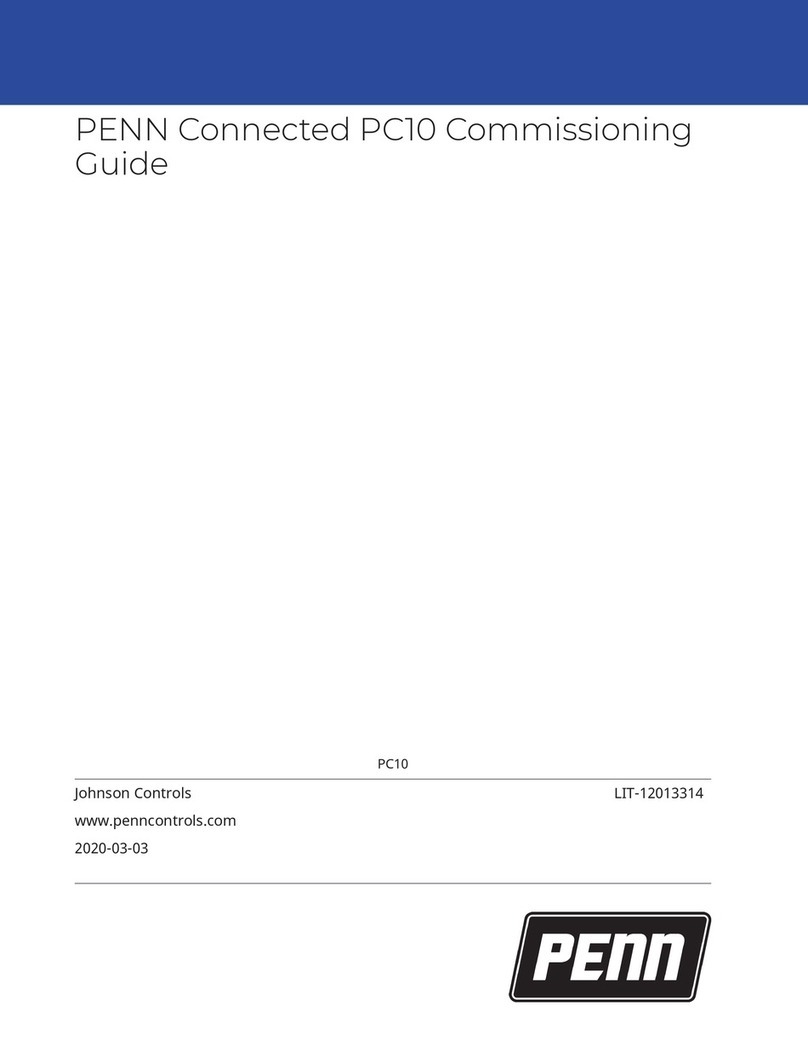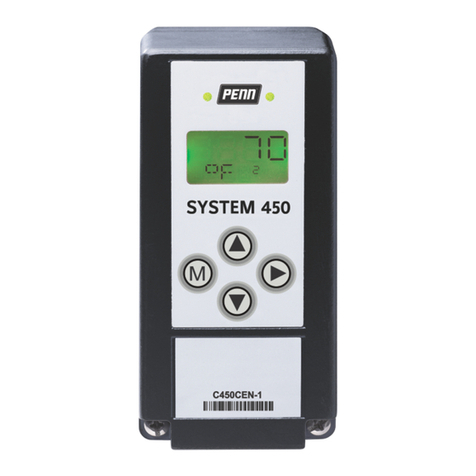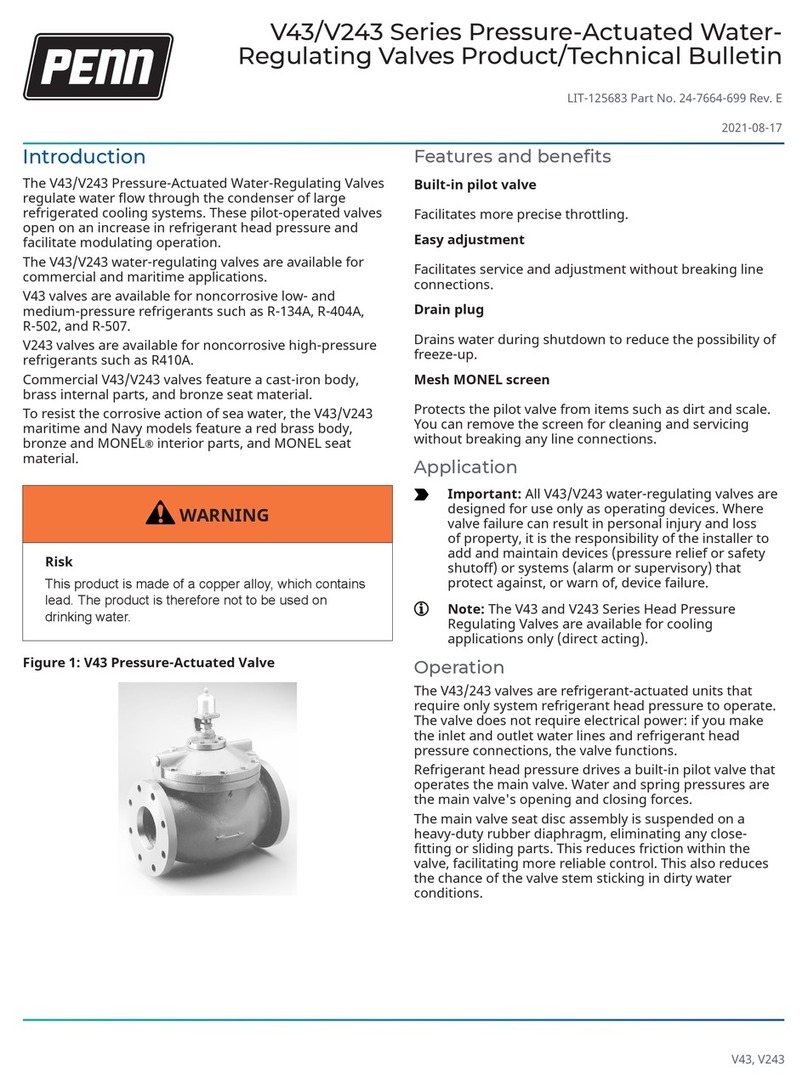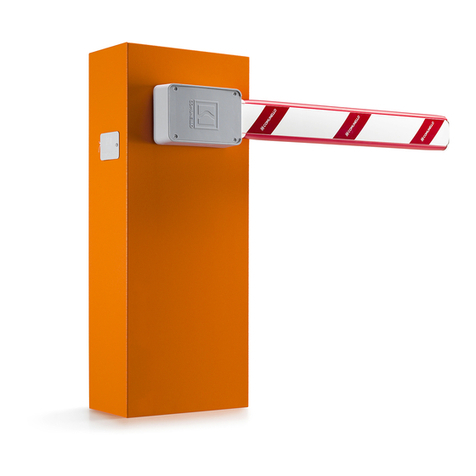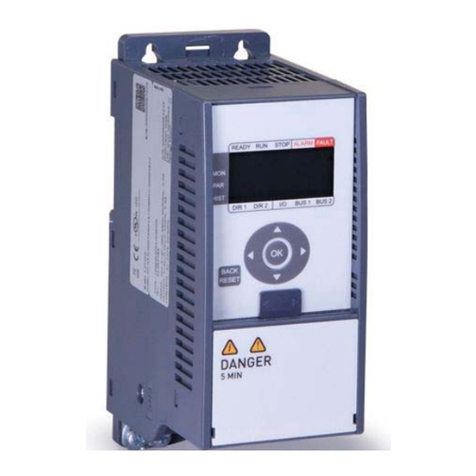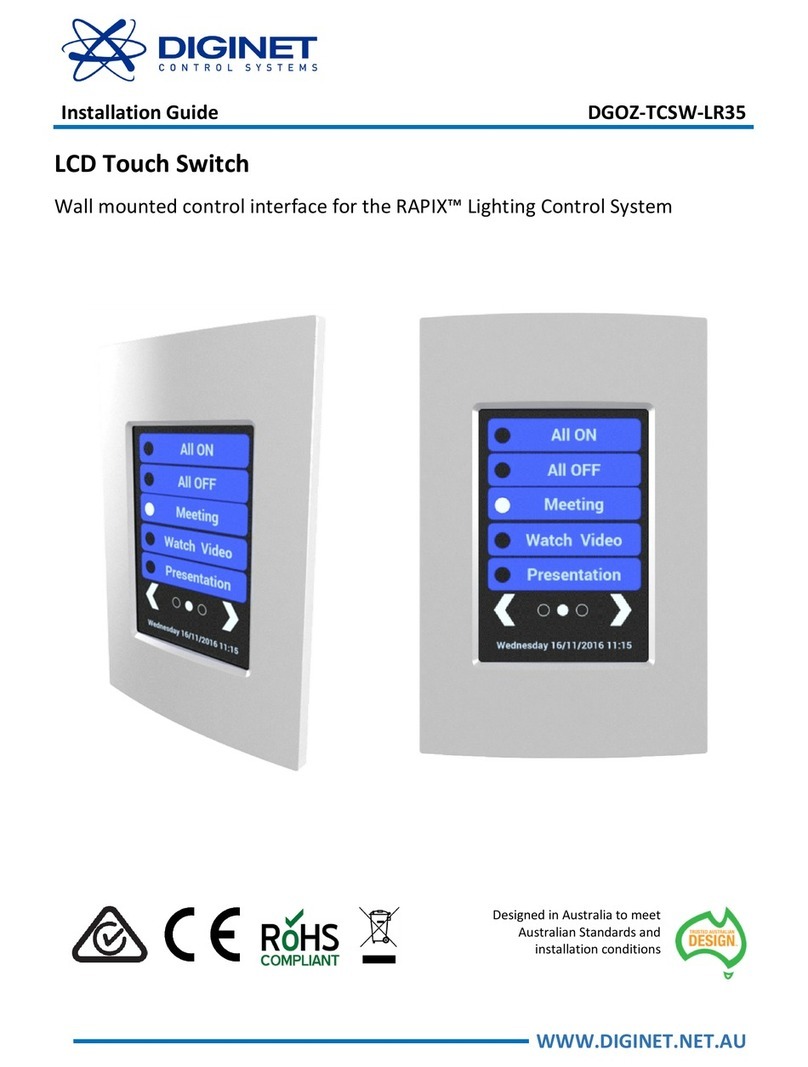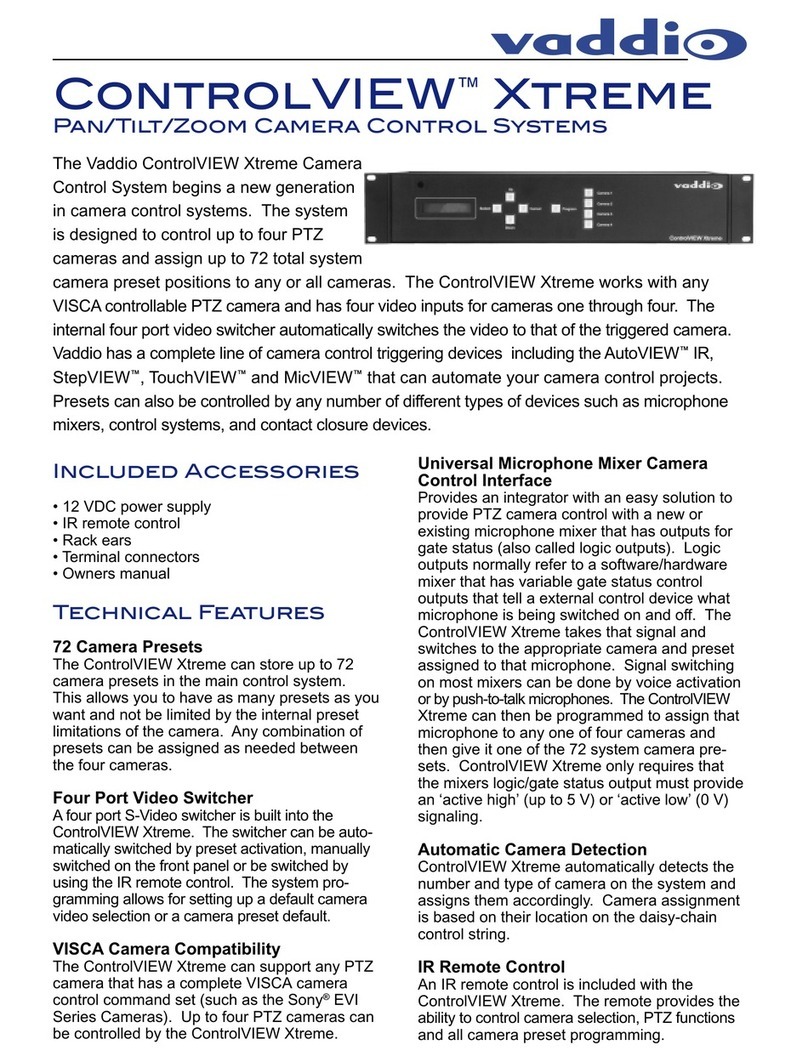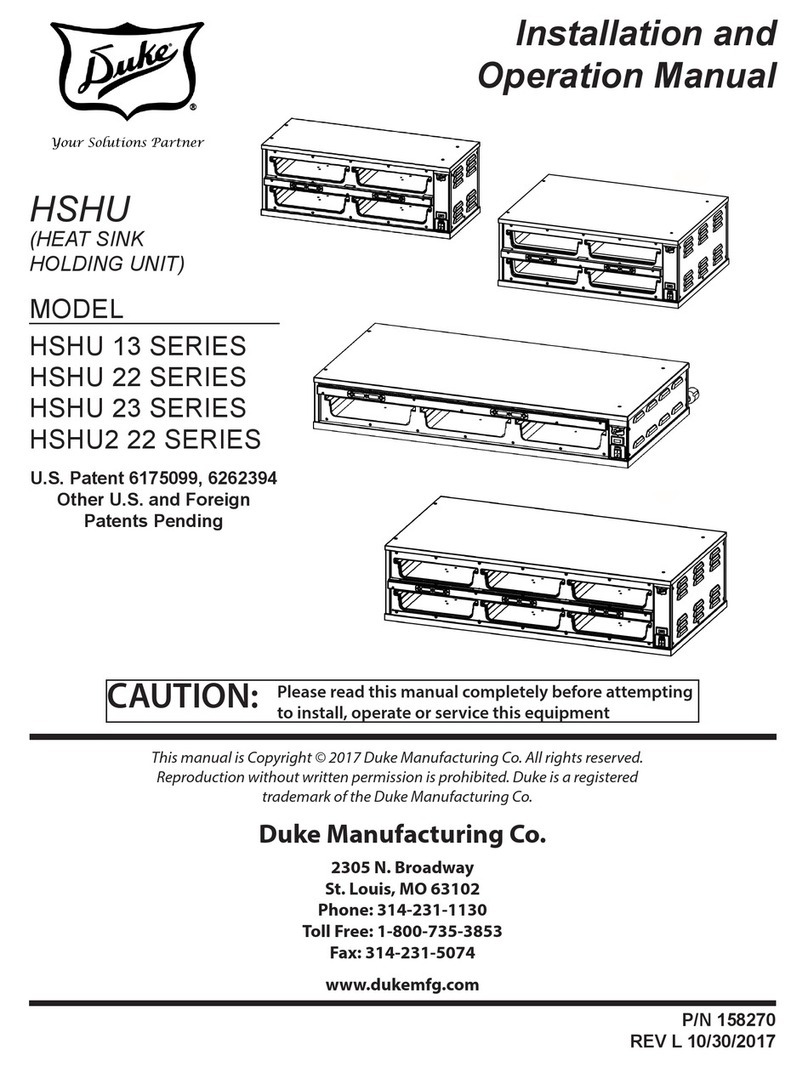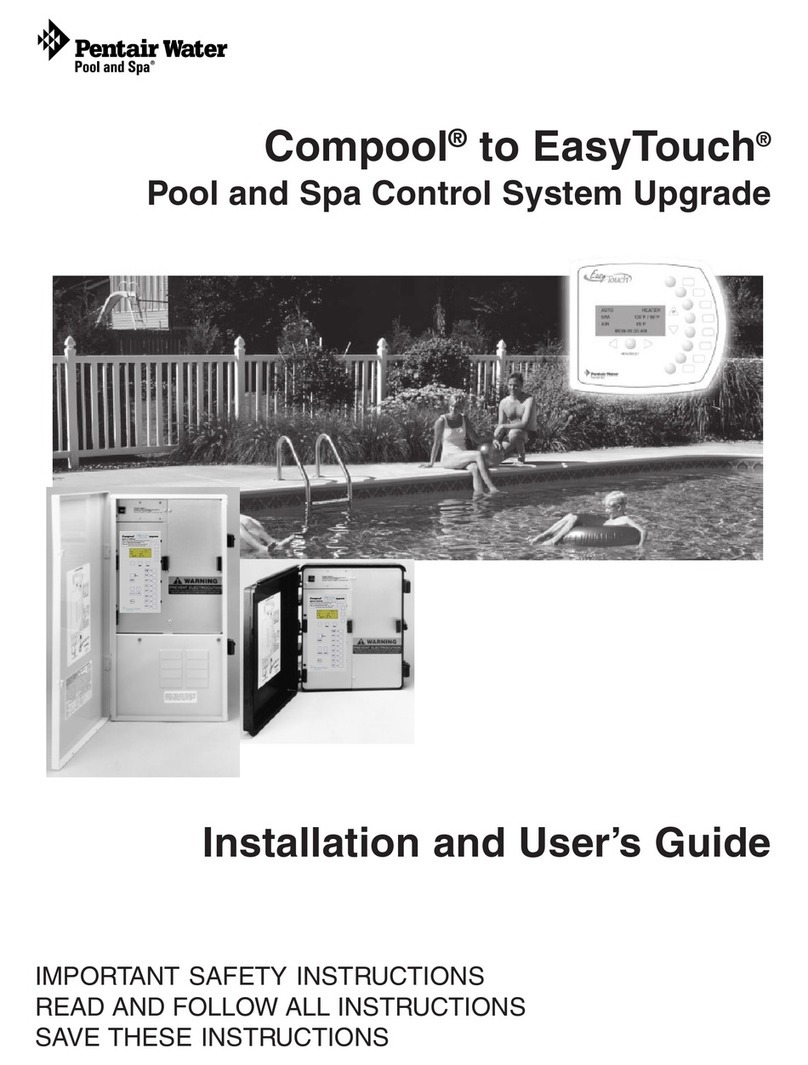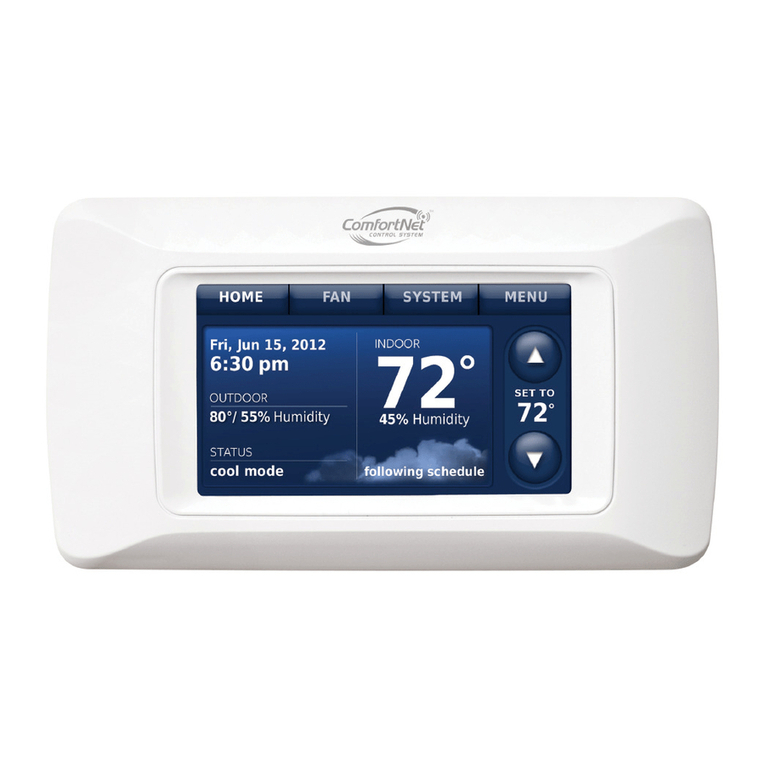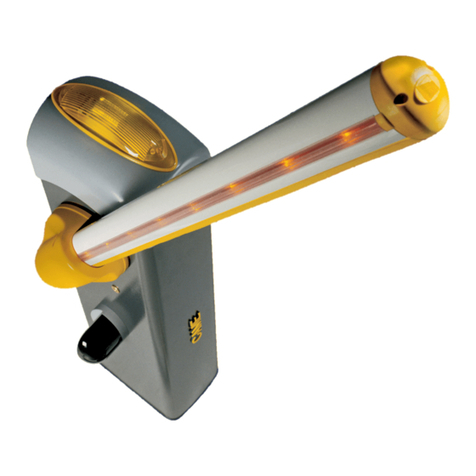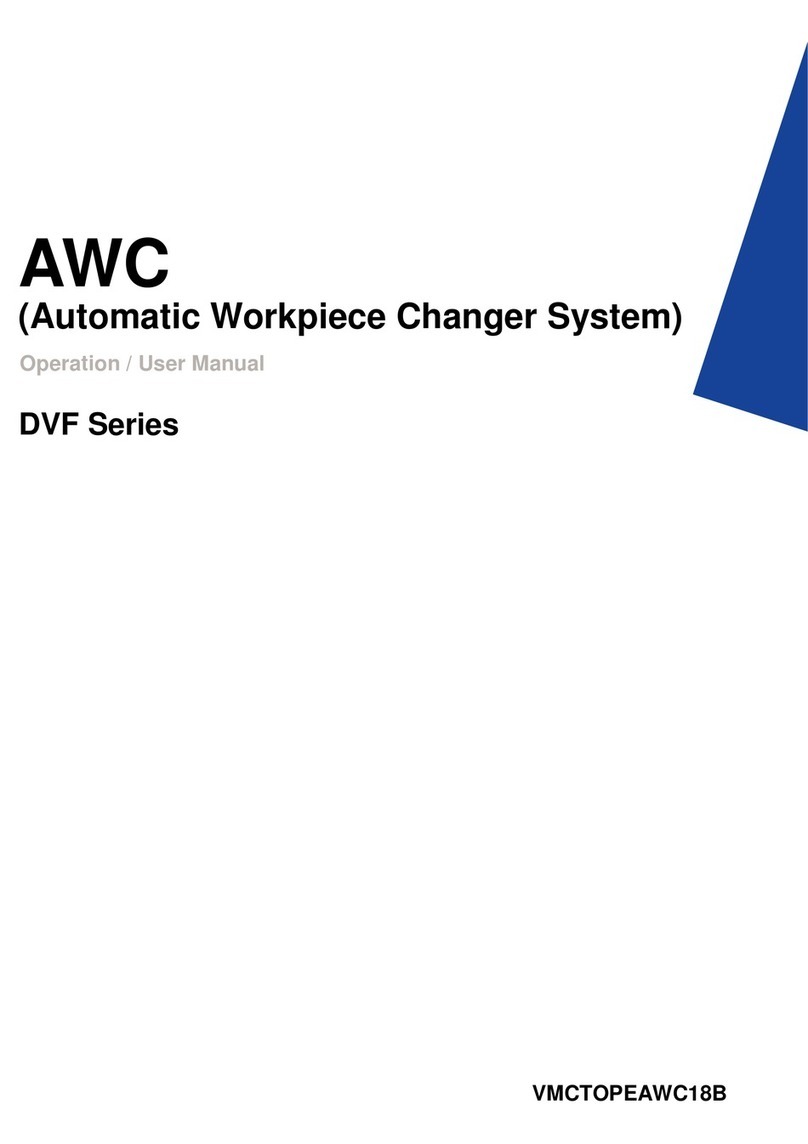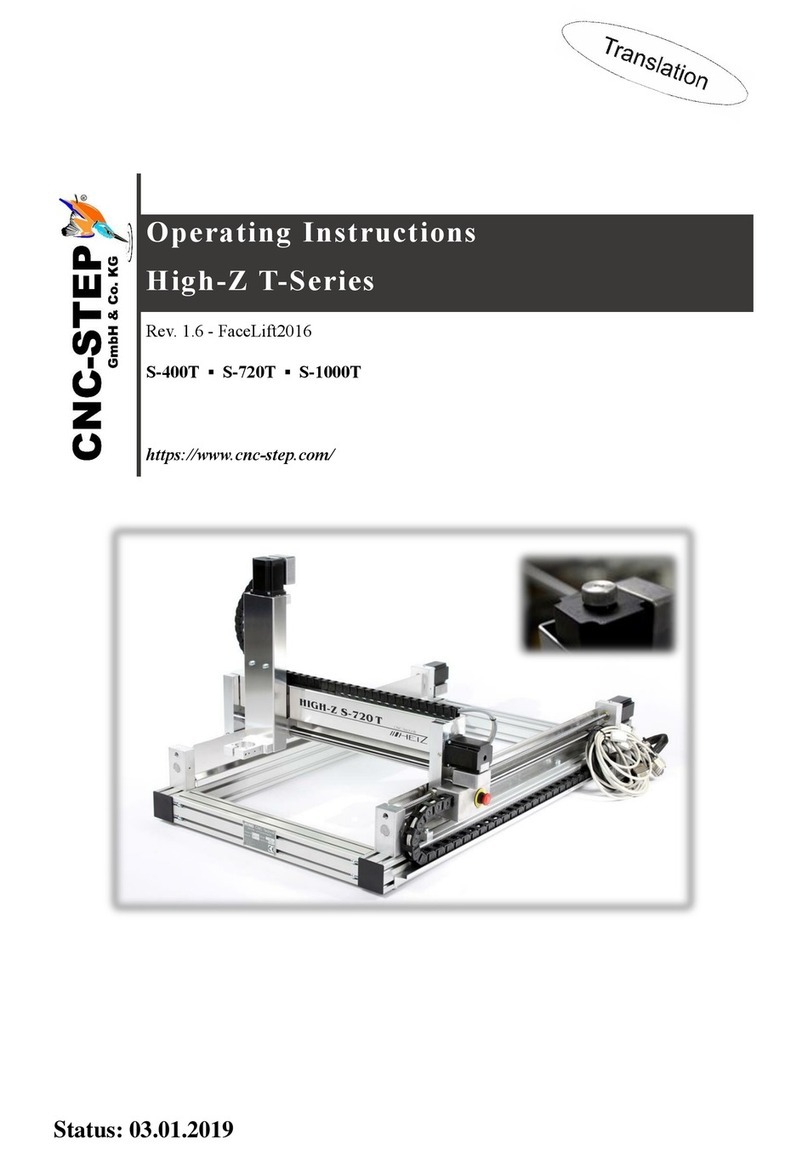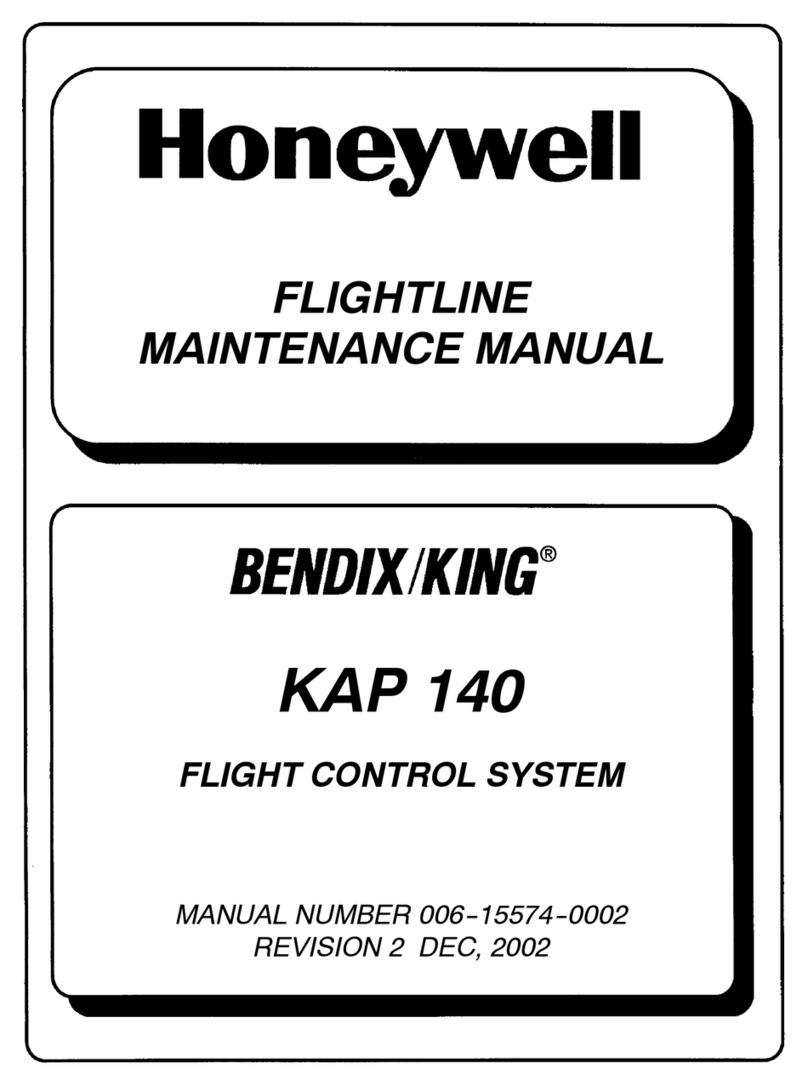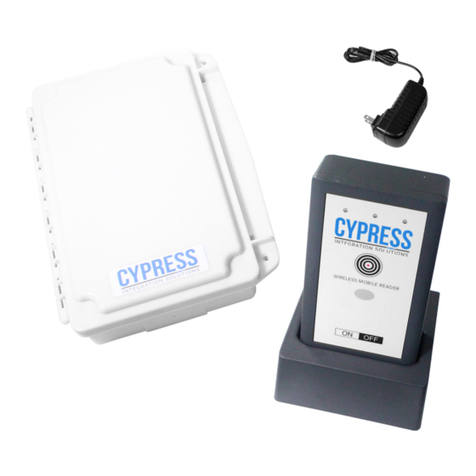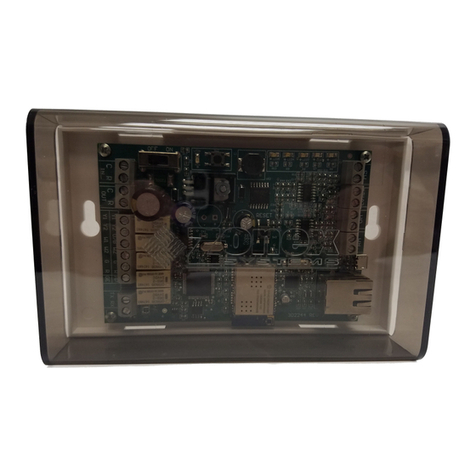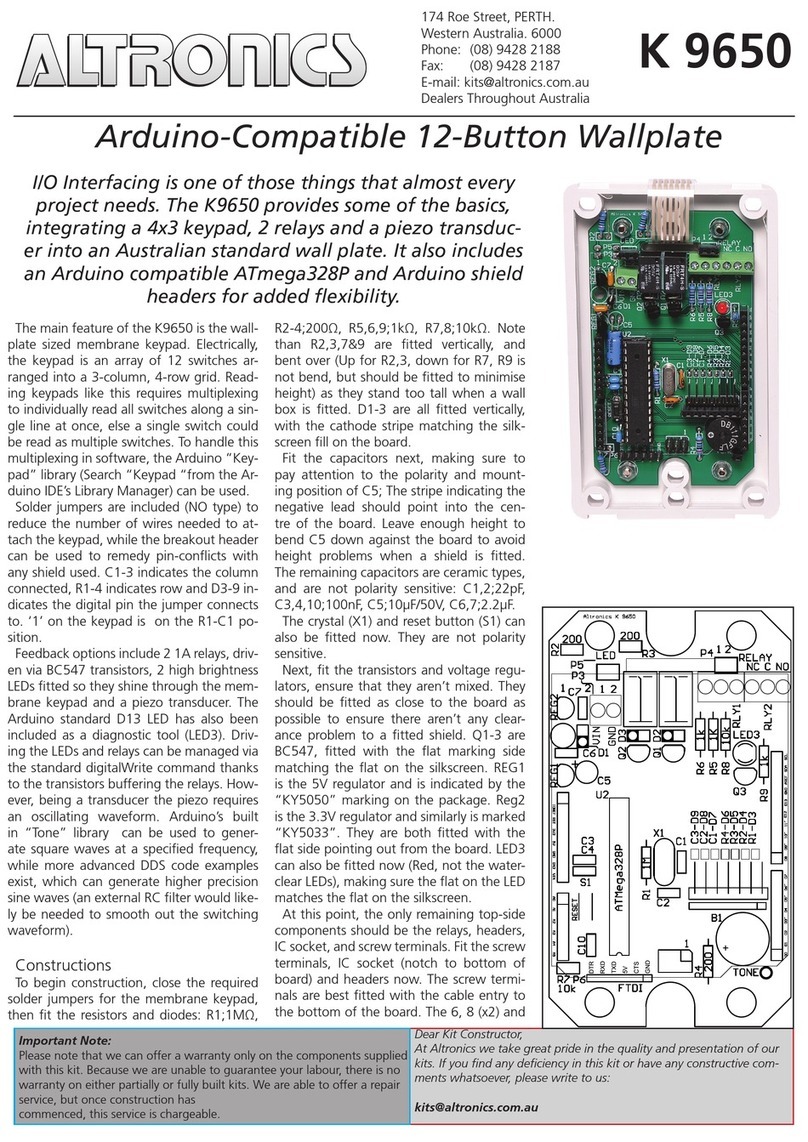
System 450™ Series Modular Control Systems with Standard Control Modules Technical Bulletin
4
Note: System 450 modules are not compatible with System 350 or System 27 modules. But you can build all of
the System 350 and System 27 control systems and many more with usually less System 450 modules.
The System 450 Series has several model variations. Each module is designed to be multi-purpose, adaptable,
and completely field configurable for temperature, pressure, and humidity applications. The System 450 Series
allows you to build a wide range of inexpensive, compact, durable, and versatile custom control systems that allow
you to monitor and control multiple control loops in your controlled system. A System 450 control system can
monitor temperature, pressure, and humidity simultaneously and control up to ten outputs (analog, relay, or both)
based on the monitored conditions.
Note: System 450 communications control modules, System 450 standard control modules, and the
System 450 control module with hybrid analog output can monitor and control temperature, pressure,
and humidity applications simultaneously. System 450 reset control modules can monitor and control
temperature and humidity applications simultaneously.
A System 450 standard control system includes:
• a single System 450 standard control module, which provides the control system UI for setting up, monitoring,
and controlling your system and the sensor wiring terminals for connecting the sensors to your control system
• one to 10 outputs provided by the control module and expansion modules. Each output provides either
on/off control or a proportional analog signal (0 to 10 VDC or 4 to 20 mA) to the equipment in your controlled
system
• one to three sensors or transducers, which are hard-wired directly to the control module and provide input
signals for monitoring and controlling your system equipment
• an optional power module to provide power to the connected control module and expansion modules
See Table 12 on page 55 for a list of System 450 modules that can be used in standard and hybrid analog output
control systems. Refer to the System 450 Series Modular Controls Product Bulletin (LIT-12011458) for a complete
list and description of the System 450 modules, compatible sensors and transducers, and accessories.
System 450 Control Systems with Standard Control Modules
A System 450 Control system with a standard control module can provide the following types of control to your
application:
•On/Off Control, including multi-stage control for temperature, pressure, and humidity applications. See Relay
Outputs on page 13 for more information.
•Proportional Analog Control, including multi-stage control for temperature, pressure, and humidity
applications. See Analog Outputs on page 18 for more information.
•Combination of On/Off Relay and Analog Output Control, with up to 10 outputs per control system and any
combination of relay and analog outputs.
• Multi-Stage Control (Relay or Analog) for temperature, pressure, and humidity applications.
•Multi-Purpose Control, including simultaneous monitoring and control of temperature, pressure, and humidity
conditions.
•Stand-alone Control. A single standard control module can be quickly and easily configured to replace a wide
variety of specialized controls in the field.
•Binary Input Control allows you to connect a set of binary contacts (dry contacts) to any System 450 input
and control your system’s relay outputs. See Binary Input Control for Relay Outputs on page 14 for more
information.
•Direct and Reverse Action Proportional Control. See Direct and Reverse Control Actions for Analog
Outputs on page 18 for more information.
•Proportional Plus Integral Control. See Proportional Plus Integral Control and Integration Constants on page
20 for more information.


